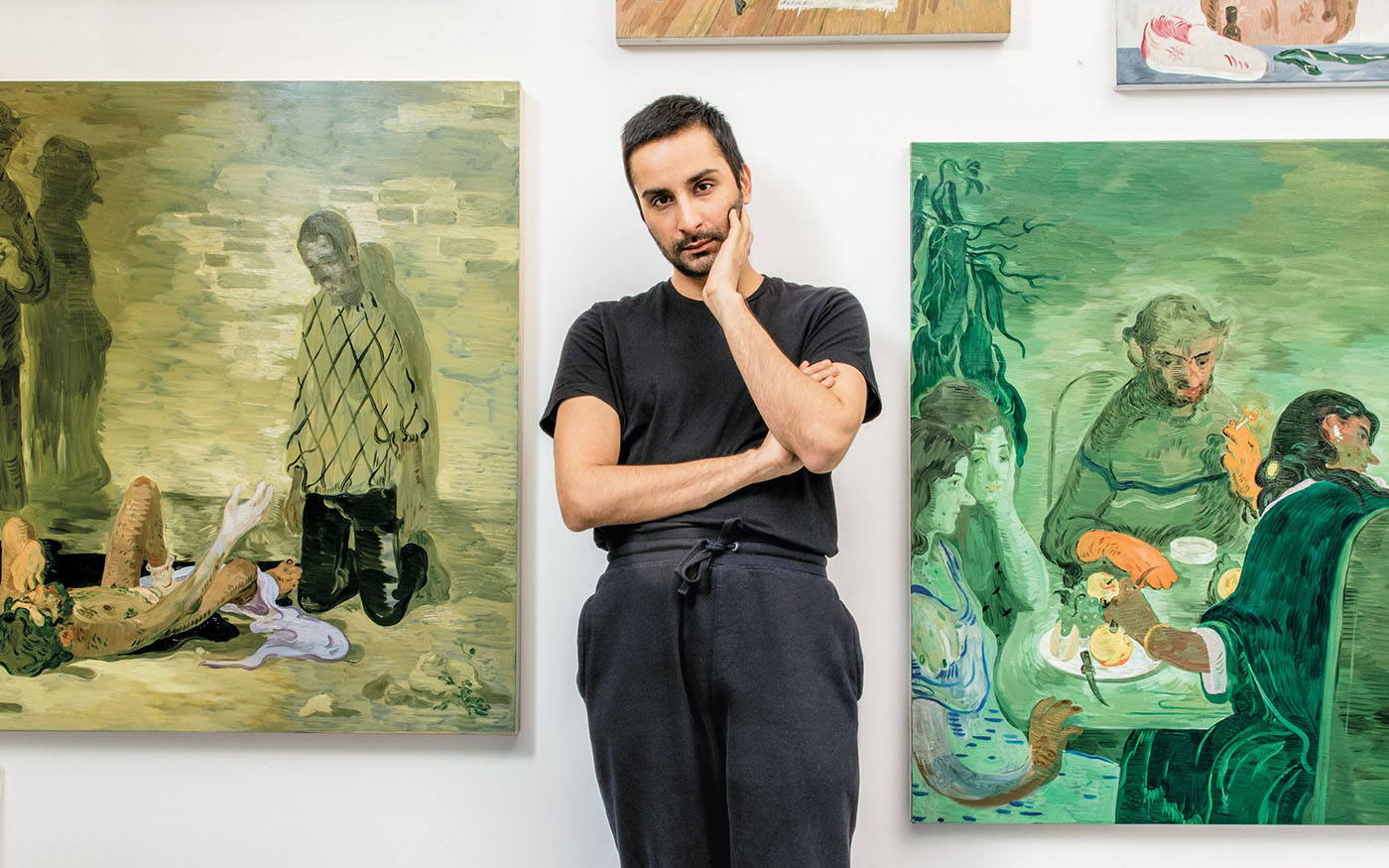Our featured artist for May 2023 is Salman Toor.
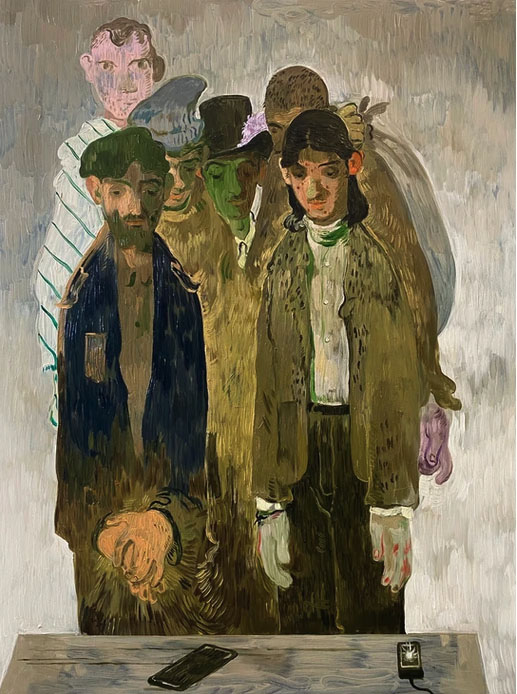
Born in Lahore, Pakistan, artist Salman Toor lives and works in New York City. As the Biennale de Lyon has noted, “He depicts scenes of queer, urban life in figurative paintings that explore desires and hopes particular to his own personal history of immigration. Toor’s slight, vaguely passive figures are at home in his compositional worlds of narrow bars and sparse apartments. They are also comfortable within themselves and their otherness, despite the occasionally inconveniencing threats of authority and conventional displays of masculinity, which loom at the edges of Toor’s canvases or presumably stand out of frame, enforcing an immigration or customs check under airport lighting. Toor’s paintings are performances of empowered self-representation: mythologizations of social environments and mundane moments replete with empathy, kindness, and tenderness.”
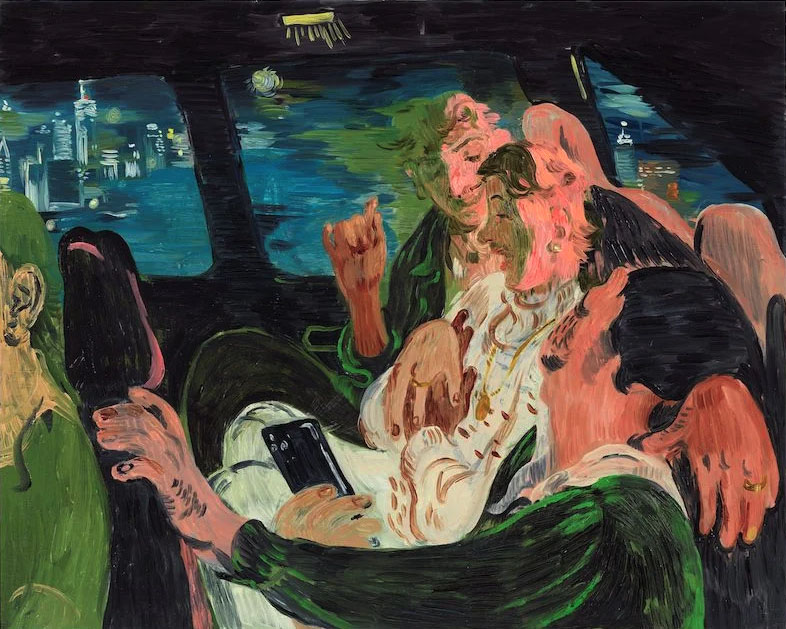
As curator Asma Naeem describes in her introduction to the show she curated for Toor at the Baltimore Museum of Art, No Ordinary Love, “His paintings resonate as journal-like entries that record moments of kinship, bonding, playfulness, lust, loneliness, rejection–pastel-inflected, gossamer-covered flights of the imagination with wispy Brown boys that mine the complexities of being an immigrant, queer and human.”
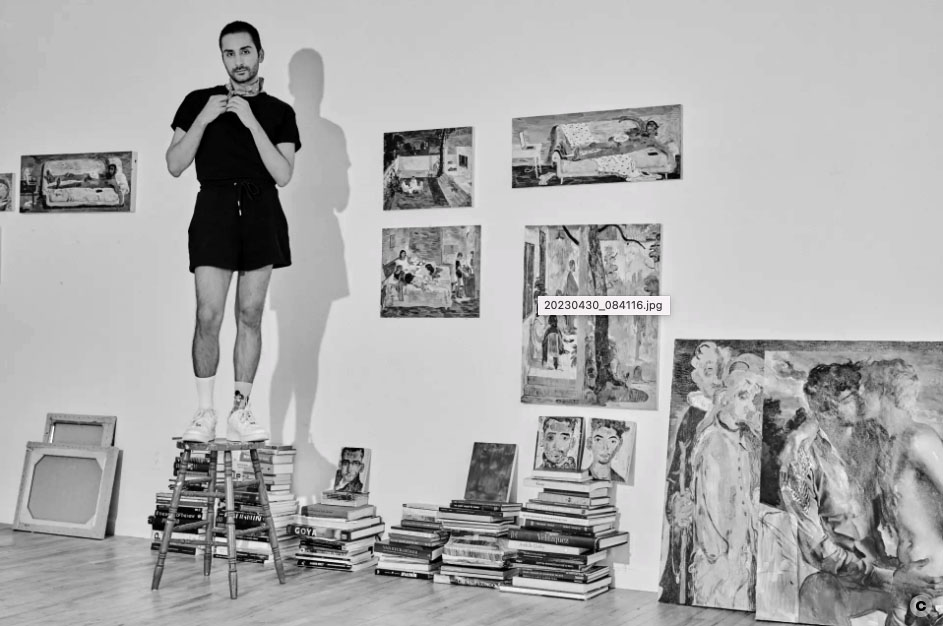
Toor came to the United States to attend school at Ohio Wesleyan University, where he received a Bachelor of Arts degree in 2006. He then obtained his MFA degree from Pratt Institute in Brooklyn in 2009. Toor is a part of a loosely-affiliated group of LGBTQ painters, sometimes called the New Queer Intimists, which also includes contemporaries Doron Langberg, Louis Fratino, Kyle Coniglio, Anthony Cudahy, TM Davy, and Devan Shimoyama. In 2019, Toor was awarded a grant from the Joan Mitchell Foundation. From 2020 to 2021, Toor’s recent paintings were the subject of a solo exhibition, Salman Toor: How Will I Know at the Whitney Museum of American Art. From 2021 to 2022, Toor’s painting, “Museum Boys” (2021) was on view at the Frick Collection; as part of the artist residency and the exhibition, Living Histories: Queer Views and Old Masters where was placed in a room in conversation with two paintings by Johannes Vermeer, “Officer and Laughing Girl” (made between 1655 and 1660) and “Mistress and Maid” (c. 1667). In 2022 in an exhibition similar to that at the Frick, Toor’s works were placed in conversation with old master painting’s from the museum’s collection in the exhibition No Ordinary Love at the Baltimore Museum of Art in Baltimore, Maryland. In 2023, the exhibition will the voyage in a traveling modified version to the Rose Art Museum at Brandeis University and will be placed in concert with their European classic paintings as well. Toor’s work is included in such museum collections as the Whitney Museum of American Art and Museum of Contemporary Art, Chicago.
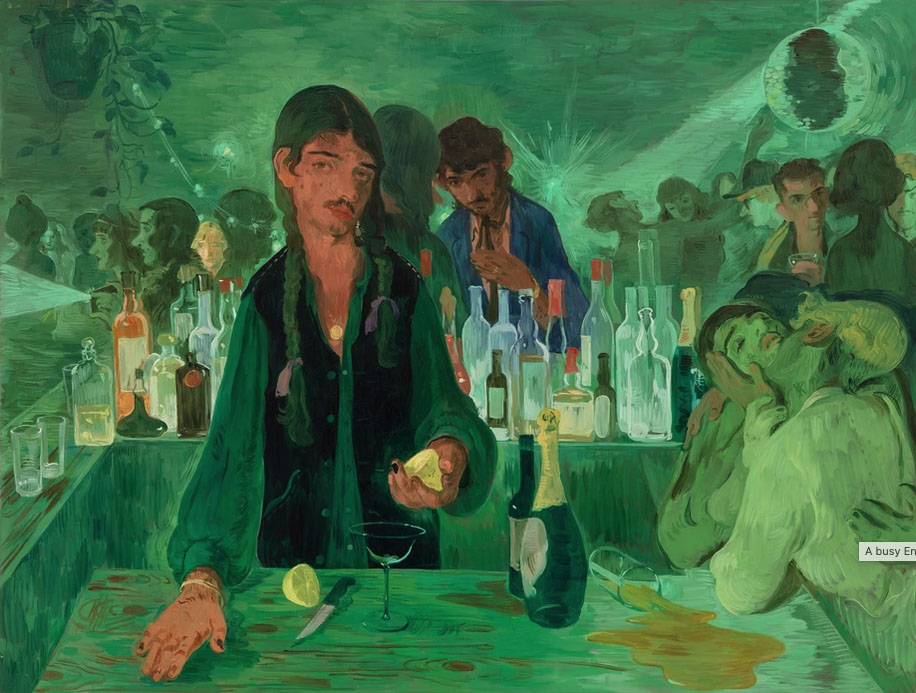
Toor has described his work as concerned with a variety of themes, such as treatment of brown men, young people in public and private spaces, and the role of technology in daily life. Curator Ambika Trasi notes, ”They are ruminations on the identifications variously imposed on and adopted by queer South Asian men living in the diaspora.” In doing so, Trasi wrote, Toor aims to include brown men in the art historical canon that is often missing this representation. Growing up in Pakistan, Toor explained an interview that he drew inspiration from Pakistani advertisements. Once he began to focus more on art, Toor found inspiration in paintings from the Baroque, Neoclassical, and Rococo eras. Toor describes being inspired by Van Dyck, Peter Paul Reubens, Caravaggio, and Watteau. Curators have pointed out that Toor’s knowledge of art history makes its way into his work. For example, critic and curator Joseph Wolin observes that Toor’s “The Bar on East 13th” directly references Manet’s “A Bar at the Folies-Bergere.”
In terms of his figuration, Toor has explained, “I like these seemingly undernourished and hairy bodies of color inhabiting familiar, bourgeois, urban, interior spaces. I see these boys or men as well-educated, creative types discovering what it means to live an artist’s life in New York City and in the thick of changing ideas about race, immigration, and foreignness, and also what it means to be American. Sometimes they can look like lifestyle images. They are also fantasies about myself and my community.” Curators have noted Toor’s paintings make use of bright, saturated colors to evoke emotion. Green is one of the most notable colors in his work. The artist cites the “nocturnal” quality that green can give to a painting, as well as its conflicting associations with poison and glamor. Toor works from memory and often depicts his friends in his paintings.
Visit Salmon Toor’s site.



